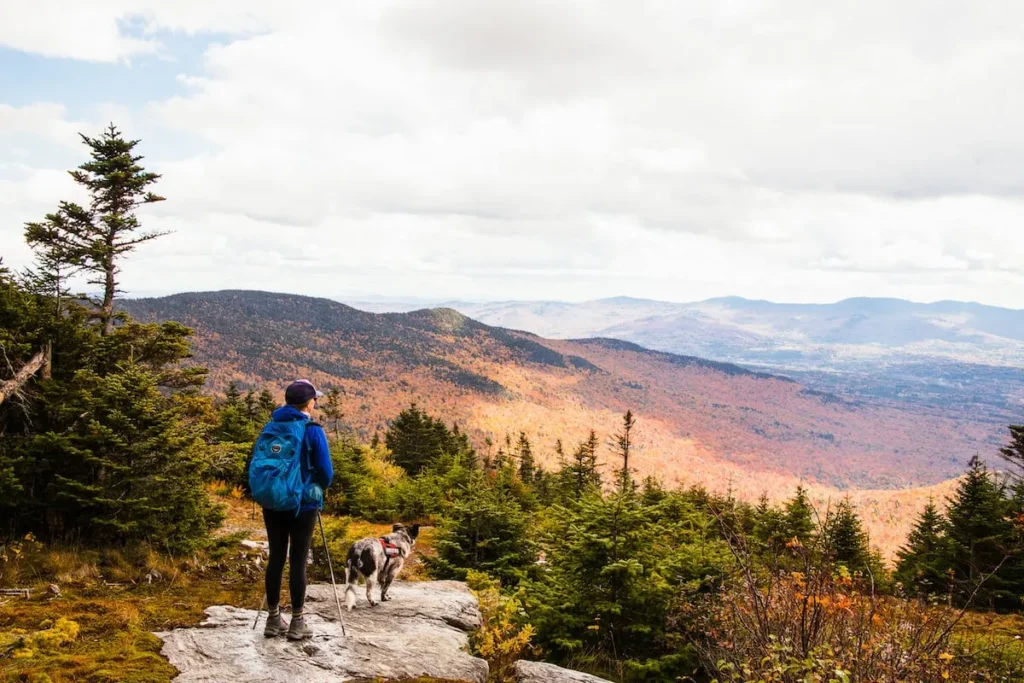You have to be ready for a wide range of unpredictable weather when trekking in the autumn. I’ve started hikes in September and October at the trailhead when the weather is gorgeous and sunny, only to find myself going through freezing rain two hours later.
From breathable base layers to a thick jacket and rain gear, these experiences have taught me exactly what to wear hiking in the autumn and how important it is to be prepared.
Finding the perfect balance between warmth and breathability could be a bit challenging at first, but there’s a quick trick I’ve discovered that will help you do it every time. I’ll go over it below.
Whether it’s a day hike or an overnight backpacking trip, the layers and clothes I mention in this post are the ones I wear (or pack) for all of my autumn activities. Continue reading to find out everything there is to know about layering, preparing for chilly weather, and staying ready for weather changes.
Best Fabrics for Fall Hiking Clothes

Your level of comfort during autumn trekking greatly depends on the materials you select. For my part, I like synthetic textiles like polyester and nylon. These are readily cleaned in the washing machine, wick away sweat, and are breathable.
Blends of merino wool are also a terrific option, though some pieces may need particular washing instructions. Additionally, I discover that dog hair sticks to merino clothing.
Denim and cotton should always be avoided. Cotton and denim take ages to dry and become very heavy after an unexpected downpour, leaving you cold and exposed to the weather.
The finest materials for fall hiking clothing will keep you warm without being stuffy and allow for adequate ventilation to keep you comfortable no matter how the weather changes. The secret is to layer with the technique I’ll discuss below and to be ready to act quickly if circumstances change.
Fall Hiking Tops
Wearing a shirt, mid-layer, insulating jacket, and rain shell should make up an effective layering strategy for the top half of your body.
Base Layer / Hiking Shirt
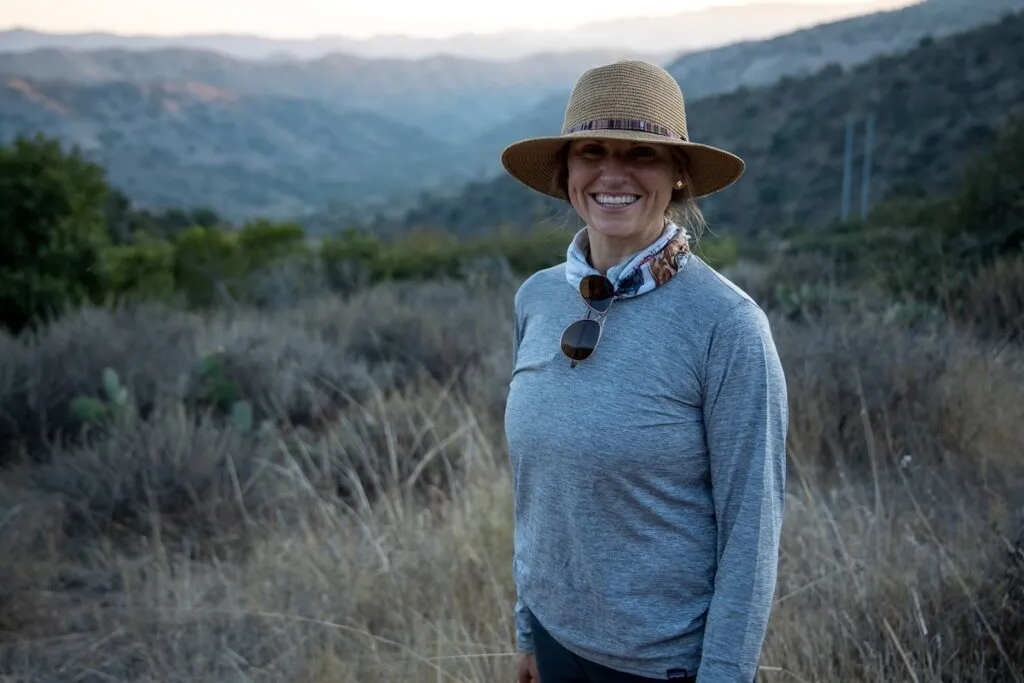
Your body temperature will be regulated and you will remain warm thanks to a quality base layer. In this manner, wearing damp clothes that stick to your body will prevent you from overheating or becoming hypothermic.
Since they are the closest to your body and easiest to add to as needed, these items form the foundation of any autumn or winter hiking attire.
The Patagonia Capilene Cool Daily Shirt is one of my favourite trekking shirts. I wear these on all of my hikes, regardless of the season, and I possess them in different colours. You never feel soggy or wet since the cloth dries rapidly and draws moisture away from the skin.
There is a long-sleeved version of this shirt as well. When I go hiking in the autumn, I usually wear long sleeves to block the wind and shield me from the sun.
Mid-Layer
Next, you’ll need a mid-layer that you may wear under your shirt in case the weather cools off a bit. I now love the following mid-layers for hiking in the autumn:
- Patagonia R1 Zip Neck Pullover: Depending on the weather, the half-zipper provides coverage or breathability. Although you should size up if you want a looser fit, it’s fitted but not too restrictive and simple to layer over a short-sleeved t-shirt without feeling too tight.
- FarPointe Alpha Cruiser: Because it weighs less than 5 oz, this mid-layer is very popular among thru-hikers. Not even in my pack do I detect it. It gives a great deal of warmth for its weight and wicks away perspiration remarkably well. But, you must use caution when doing this. If you’re bushwhacking or have pets, it snags easily.
- Icebreaker 260 Tech Half Zip Thermal Top: My favourite merino wool layers are made by Icebreaker, if you prefer wool to synthetic materials. Unlike some wool tops, this half-zip is incredibly cosy, doesn’t itch, and can be worn for a long time before needing to be washed. Just make sure you adhere to the washing guidelines. A handful of my Icebreaker pieces were mistakenly shrunk in the dryer, which resulted in their devastation.
Insulating Jacket
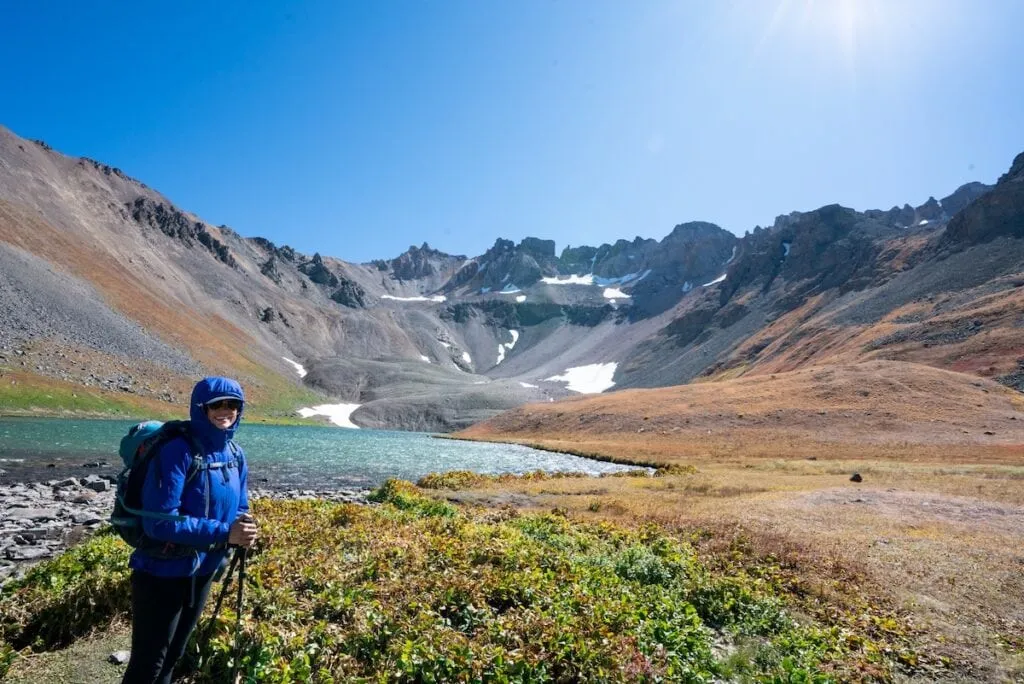
Having an outer layer on will help you be ready for any unexpected shifts in the autumn weather, even if you’re usually a hot person. Keep in mind that it gets colder sooner in the afternoon in the autumn since the sun sets earlier behind the mountains.
Instead of using down, I would use synethic materials. If it rains, down gets damp rapidly and loses its ability to keep you warm. In addition, I prefer jackets with hoods that I can draw over my head in the event of extreme wind.
My two favourite synthetic hiking jackets for fall hiking are these two.
- Patagonia Nano Puff: An excellent layer for all seasons, but particularly useful in the autumn. When I go trekking in this jacket, I can move freely and it doesn’t seem too heavy or hot. It also comes in a lot of attractive colours. Though I like the fit more, it’s not as breathable as the Arc’teryx jacket I’ll talk about next. See my complete Patagonia Nano Puff Review for more details.
- Atom Insulated Hoodie by Arc’teryx: Prior to my dog chewing it apart, this was my go-to jacket . I hardly notice wearing this lightweight jacket—it feels like you are wearing a cloud.I don’t feel like I overheat in it the moment the sun comes out, and I think it does a great job of controlling my temperature. I suggest sizing up if you’re in between sizes because of its athletic fit.
Fall Hiking Pants

It’s a beautiful, sunny fall day, so feel free to wear your summer hiking trousers. But, when the temperature drops, you should replace your hiking trousers with something a little bit warmer.
These are the trousers I hike in the autumn:
- lululemon Fast and Free High-Rise Thermal Tight 28″:I could live in these lululemon Fast and Free High-Rise Thermal Tight 28s during the colder months since they are so comfy. These are high waisted, fleece-lined leggings that offer a little more insulation than a typical pair of leggings. The pockets are large enough to accommodate your phone.
- Gnara GoThere Pants: The more conventional Gnara GoThere Pants have a DWR coating that will keep your legs dry in the event of a drizzle. These trousers have a pretty great feature: the crotch area zips off, saving you from having to pull them down when you need to urinate. Simply unzip, bend over, move your panties to the side, and proceed. If you are caught in inclement weather, this is quite helpful.
- REI Activator Pants: Additionally, the DWR treatment on them aids prevent water from soaking through and instead beading up and rolling off the trousers. I adore the waistline on these in particular. Because of its partial elasticity, it conforms to your body and is comfy.
Rain Jacket
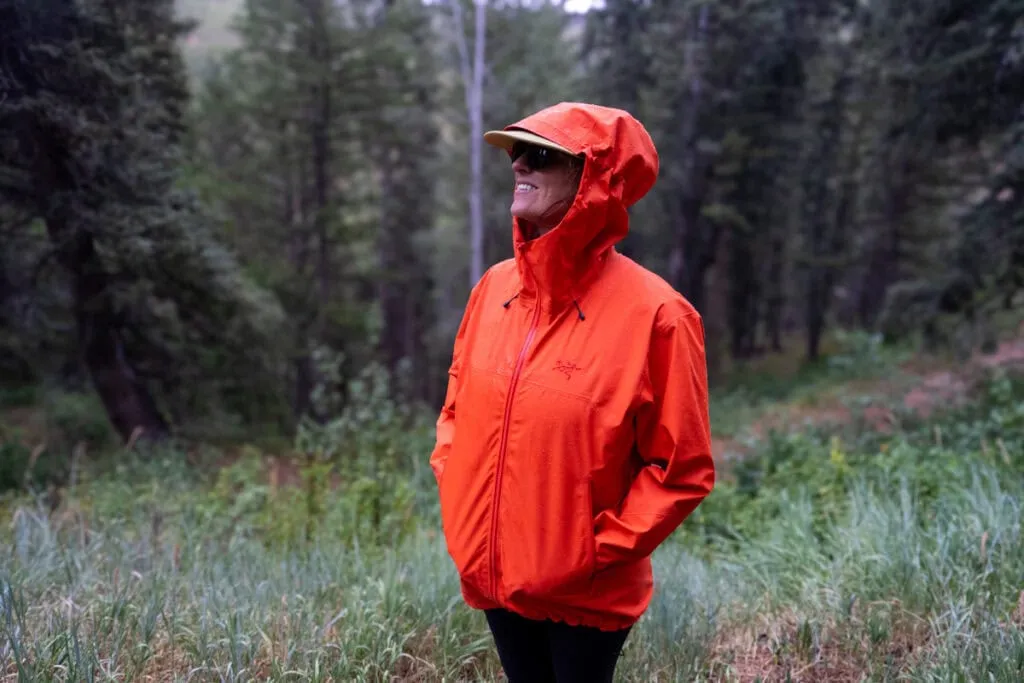
Whatever you do, if you want to hike a long distance while wearing your rain jacket, make sure it includes pit zips that will allow you to let some air out.
Depending on your budget, you might want to look at these several rain jackets. Check out my post on the top lightweight rain jackets for many more suggestions.
- Arc’teryx Beta SL:An investment well spent if you intend to walk often in inclement weather is the Arc’teryx Beta SL. This lightweight, three-layered GORE-TEX jacket can withstand extreme weather conditions thanks to its large pit zips, amazing hood, and RECCO® reflector, which aids in your recovery in the event of an accident or loss of identity. Check out my Arc’teryx Beta SL Review for all the details.
- REI Rainier Rain Jacket:This is an inexpensive, no-frills, 2.5-layer rip-stop nylon rain jacket that will work if you get caught in an unexpected downpour. Although it’s not the most breathable, it’s still a solid option for sporadic use.
- Patagonia Torrentshell: A good rain jacket for a moderate price. It functions incredibly well in heavy rain and features an adjustable hood and pit zips.
Beanie
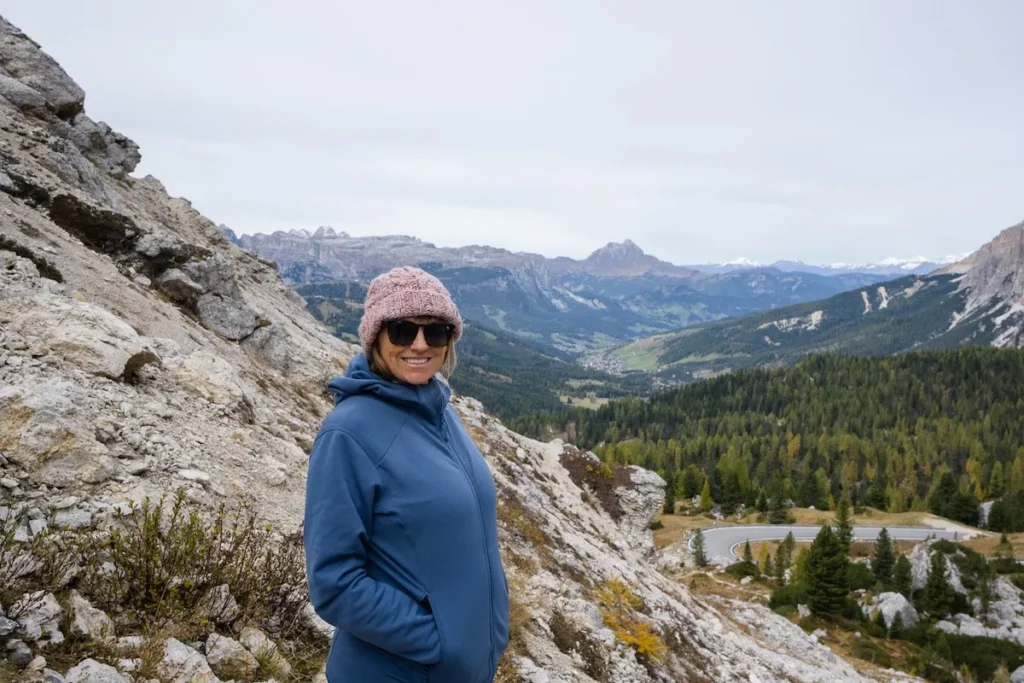
Is the weather on your autumn walk significantly colder than you anticipated? For lunch, are you in a windy area? To keep your head and ears warm, put on a warm beanie.
Buff
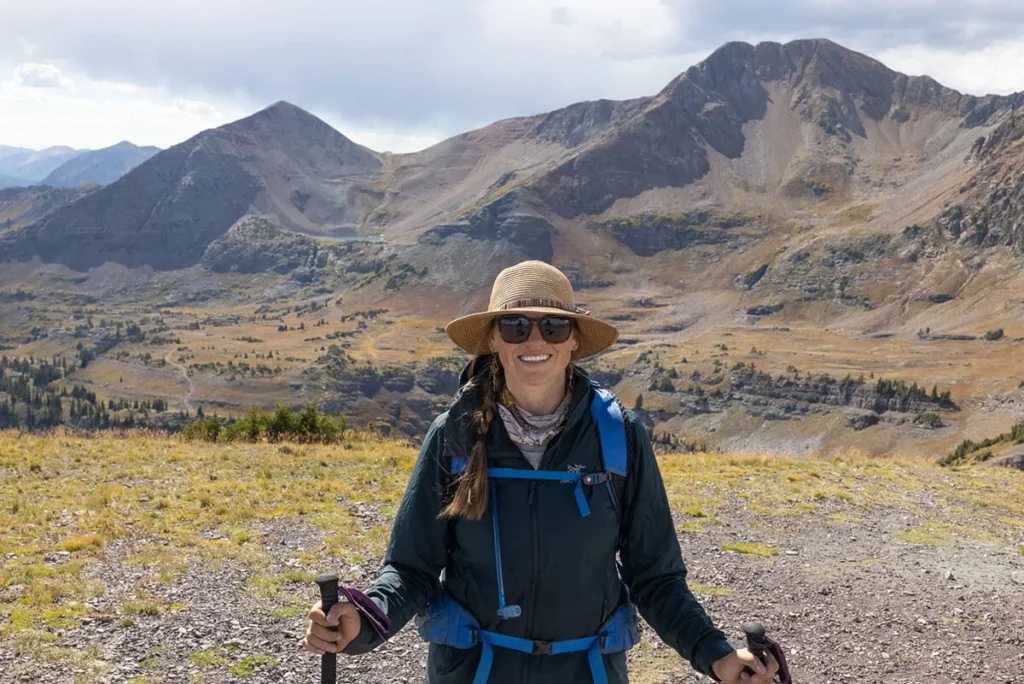
I discovered the versatility of the Buff, which is made from recycled polyester, during my Everest Basecamp Trek a few years ago. I was much more comfortable when the wind began howling and I simply pulled the Buff up over my mouth, nose, and neck.
When I hiked the W Trek in Torres del Paine, Patagonia, I also used one. I wore the Buff as a headband over my helmet to keep it from blowing away in the wind and to act as an ear warmer. It even offers sun protection, with a UPF rating of 50.
Waterproof Hiking Boots
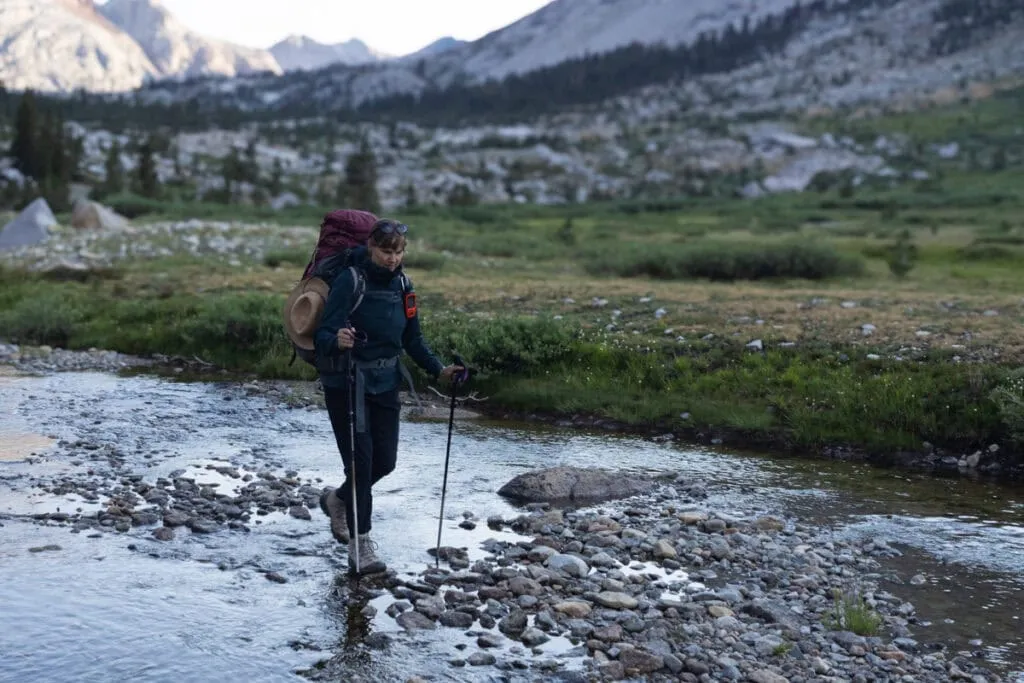
During the autumn, hiking boots that are waterproof are preferable to shoes that aren’t (you can read more about the benefits and drawbacks of waterproof boots here). In the summer, wet feet might not be a big bother, but when the weather cools off in the autumn, wet boots can become a major issue, leading to painful blisters or numb toes.
Additionally, I advise mid-to high-ankle shoes. Fall conditions might be more slippery, so having that extra ankle support can help reduce the risk of injury.
For fall trekking, these are my top two picks for waterproof hiking boots. In my compilation of the top women’s hiking footwear, I offer a tonne more recommendations.


